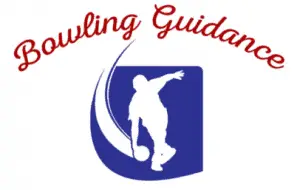 Do you know how long bowling lanes are? 60 feet. Many of you have been bowling for a long time and you probably had no idea about that. Well, now you know. But the oil you see on the lane, are they applied in a uniform manner all over the lane? The answer is, no. Even the longest oil pattern, the PBA Badger oil pattern is 52 feet long.
Do you know how long bowling lanes are? 60 feet. Many of you have been bowling for a long time and you probably had no idea about that. Well, now you know. But the oil you see on the lane, are they applied in a uniform manner all over the lane? The answer is, no. Even the longest oil pattern, the PBA Badger oil pattern is 52 feet long.
This means only some specific areas and parts of the lanes are oiled with the machine. Now let’s come to the main topic for today which is the Cheetah oil pattern. How long is it? How it impacts your bowling performance? How to play on it? Well, let’s find out!
What is the Cheetah oil pattern?
As you know, typically, the bowling oil machine applies oil concentrating in the middle of the lane than it does on the outside. Putting oil this way allows you to enjoy perfect hooking, and keeps it right on track.
This 35 feet oil high-volume oil pattern is often used on lane surfaces that are worn out. Cheetah broadens the area on the lane with less wear. Even though that increases the chance of your ball going into the gutter, but with Cheetah it’s different. This pattern can range from one of the highest-scoring to one of the lowest scoring, depending on your bowling style and the lane surface. Yes, the surface will play a key role in terms of ball reaction on the Cheetah as in some cases you will see more hooking than you see on a regular house pattern.
How long is the Cheetah oil pattern?
The cheetah oil pattern falls under the shortest oil pattern category. In general, the house patterns are 40 feet long. Since the Cheetah oil pattern measures 35 feet in length. Previously, and in some cases, the length is 33 feet. This oil pattern and its length doesn’t really make it easier for bowlers who are new, or seasonal, or occasional. Even pro bowlers can often have hard times adjusting to this pattern. But it is pretty manageable once the lanes are pretty worn out. This pattern maximizes the area of the lane that is really close to the gutter with less wear and gives you enough room to roll your bowling ball.
How do you play the Cheetah oil pattern?
Cheetah isn’t really the easiest pattern to bowl on. This pattern is really flat and that’s why you cannot play in the middle part of the lane. You need to be closer to the first arrow (from either left or right side). If you’ve been playing on it for a while, then get close to the second arrow, and if you see the lane is noticeably dry, then go for the third arrow.
The more you see the pattern breaking down, the more you will have to angle your ball. As you can’t see the breakpoint at the middle part of the lane, you will see the visible move on the edge of the lane that is close to the gutter. Doesn’t matter if you’re left or right-handed bowler, always migrate toward the side to take advantage of the more pristine surface areas. The reason Cheetah is exciting that is because it allows bowlers to make “risk-reward” decisions based on their bowling style and rolling the ball near the gutter.
Another problem you face with Cheetah is that it will make your ball hook too early. As far as lane play goes, to get a quick start on this pattern, getting the ball as close to the channel as possible with an aggressive smooth rolling ball smooth rolling ball should be your main prior. Most bowlers love a urethane ball because of the friction it offers.
If you’re a stroker, play this pattern from the outside part of the lane but not too far out on the lane surface. If you play further out, your bowling ball will hook too early, and you will have trouble carrying. So use an aggressive polished ball paired with enough ball speed you’re gonna get the expected result on Cheetah.
Are you a tweener? Don’t worry, we got you covered as well. As a tweener, you should slide your ball a bit deeper on the lane simply because you have a low ball speed. But you will still have your ball close to the channel. Since you have a lower ball speed, go for a ball that has a little less surface. The ball surface is a bit too much or too little, you’re gonna end up with splits at the pocket.
So what about a power-dominant cranker? Excellent! Since you’ll have high ball speed and rev rate, You can go a bit deeper and enjoy your ball hooking more while it will still go pretty close to the gutter. Cheetah will give you more room for error and smooth ball carry if you’re playing with a ball with a medium surface.
And lastly, for high rev and speed dominant power bowlers, Cheetah can be a bit tricky to handle. Due to the extreme amount of backend reaction, the Cheetah can be very challenging when the oil is fresh. To combat that, use a very aggressive ball with quite a bit of surface. You need to do this to get your bowling ball to roll as soon as possible. This will also increase the room for error. Once Cheetah begins to break down, you will see less backend motion and a much comfortable ball reaction.
Conclusion
Indeed, this PBA accredited bowling oil pattern can be a bit challenging. But remember, nothing is impossible. With a little bit of practice, you can adapt to this lane in no time! Just stay close to the gutter and migrate to the left when the pattern starts to break down and don’t forget an aggressive bowling ball. Good luck!

